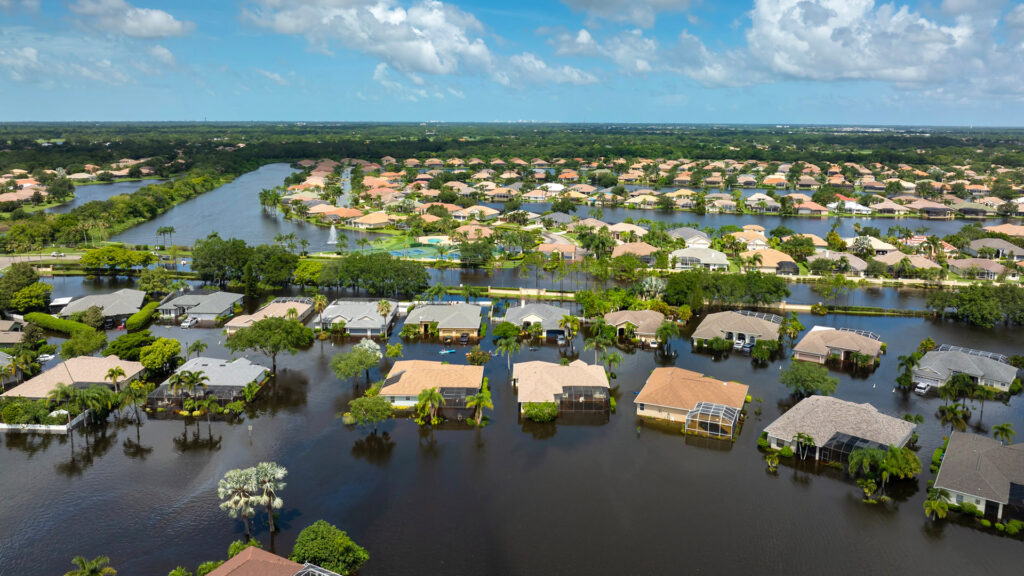Flood Insurance for the Texas Gulf Coast Serving Alvin, Brazoria, Friendswood, Galveston, Houston, League City, Pearland, Texas, and the surrounding areas
Flooding is an on-going problem facing Texas residents that own property along the Gulf Coast region. Major damage resulting from severe thunderstorms, tropical storms, hurricanes and any weather event bringing sudden or prolonged rainfall, can be a crippling expense for home and property owners. Protect yourself in the event of a weather disaster with affordable flood insurance. Since 1985, Rick Tinker Insurance has been providing flood insurance to residents in Houston, Harris County, Friendswood, Pearland, all along the Gulf Coast and inland Texas regions.
Any other questions?
We will help evaluate you risks for flood damage and craft an affordable insurance plan that takes into consideration your level of risk.
Call 281-484-7158 today for more info or fill out our form to request a free quote for Texas flood insurance.
Flash Flooding – Inland Texas
Inland areas of Texas are by no means immune to flood damage. Drought-prone areas that receive little annual rainfall become high-risk flood zones as the ground becomes overly dry and dense. When these areas are subjected to heavy bouts of rainfall in a short period of time, they are extremely susceptible to flash flooding. The damages associated with flash floods are similar to those related with other types of flooding, expect that homes in these areas are often severely unequipped to deal with raised water levels.

Why is Flood Insurance important?
Having flood insurance in the Texas Gulf Coast region — including areas like Alvin, Brazoria, Friendswood, Galveston, Houston, League City, and Pearland — is critically important due to several key factors:
1. High Flood Risk
- These areas are low-lying, coastal, and prone to flooding from:
- Hurricanes and tropical storms (e.g., Hurricane Harvey in 2017)
- Heavy rainfall events common in the Gulf Coast
- Overflowing bayous, rivers, and storm drains
- Even areas not officially designated as high-risk flood zones have experienced severe flooding due to the intensity and unpredictability of Gulf weather.
2. Limited Coverage from Homeowners Insurance
- Standard homeowners insurance does not cover flood damage. Without separate flood insurance, homeowners are left paying out-of-pocket for costly repairs.
3. Federal Disaster Aid is Limited
- Federal disaster assistance typically comes in the form of low-interest loans — not grants — and is only available if the area is federally declared a disaster zone. Flood insurance provides reliable protection regardless of disaster declarations.
4. Affordability in Low-Risk Zones
- Flood insurance is often more affordable in moderate- and low-risk areas, yet flooding can and does happen in these zones. Securing coverage before a flood occurs is much more cost-effective.
5. Real Estate Value and Loan Requirements
- Many mortgage lenders require flood insurance in FEMA-designated Special Flood Hazard Areas. Even if it’s not required, having it:
- Protects property value
- Reduces financial risk during resale or refinancing

More information about the dangers of flooding
Flooding is a national problem…
In 1968, Congress created the National Flood Insurance Program (NFIP). This was needed because of the sharply rising costs of emergency relief to property owners after a flood. Federal Emergency Management Agency (FEMA) manages the NFIP, and works with almost 20,000 communities across the country to enforce floodplain management ordinances.
Millions of homeowners now have valuable protection against a flood loss. It is available to every resident of communities that participate in the NFIP, regardless of whether the structure is located in a mapped flood plain. Flood insurance can be purchased through us or the NFIP directly. There is a 30-day waiting period before coverage under a new policy takes effect.
Please let us know if you would like to discuss this often overlooked coverage.
Resources:





